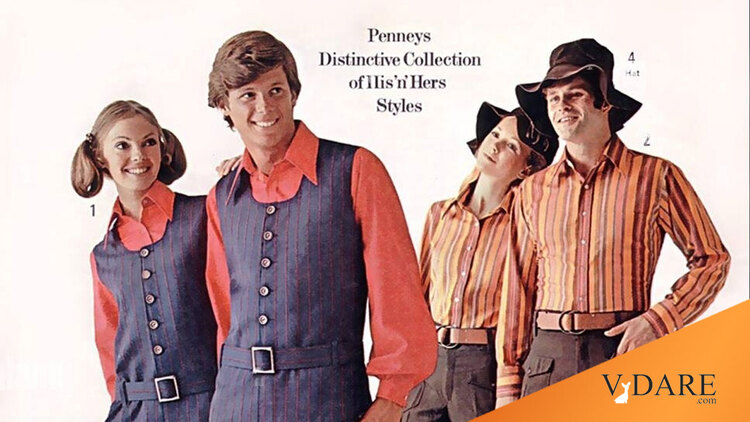
03/21/2023
I was surprised to see that the neologism “unisex” is still used in books more than half as often as at its 1983 peak:

“Unisex” had a lot to do with Late Sixties wars over hair. In the 1960s, males got their hair cut only by male barbers. This had advantages, such as that my barber subscribed to Mad magazine and let me take home old issues. See the Coen brothers’ The Man Who Wasn’t There for the culture of men’s barbershops.
In general, if you want to understand 20th century America, watch a Coen brothers movie on the topic of interest. The Coens are like an artificial intelligence system that’s read everything, but unlike current AI, has interesting insights.
Women mostly had their hair cut by other women, typically named “Madge,” unless they could afford flamboyant male hairdressers, typically named “Sir André.”
But in the 1970s it became cool for guys to get their hair cut by women. Hair salons put out signs declaring themselves “unisex” to advertise that the opposite sex was okay to come in. After a while, people stopped worrying about it, so I don’t recall thinking about the term “unisex” in recent decades.
Nobody today remembers how hard Society pushed “unisex” androgyny in the 1970s. For example, from the Sears catalog:

From the JC Penney’s Catalog:

I don’t recall anybody saying that couples should dress alike during the current World War T craze, but it was a highly respectable opinion a half century ago.
This is a content archive of VDARE.com, which Letitia James forced off of the Internet using lawfare.